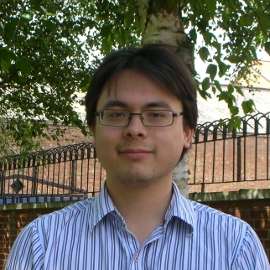Bachtrack is asking the same six questions to many composers this month as part of its focus on contemporary music. Here’s what Joahnnes Maria Staud had to say.
1. What influences are important to you and your music? Do you choose them, or do they choose you?
All kinds of influences, from literature to visual arts, from philosophy to science, from cinema to politics, from conversations with friends to rambling in nature, ... are important to me. As a composer you go through life with open antennas, everything can be an inspiration, be of interest for a new piece. It is probably a mutual choosing between the influences and me – call it coincidence.
2. What (if anything) do you want listeners to take away from your music?
I can’t answer that. I am glad that music is abstract enough so that the listener can follow his instincts, his emotions while listening – if he is not stuffing his open ears with biases...
3. Is there a composition of yours which you are most satisfied with? What makes it successful?
This is a a difficult question. There are some compositions of mine which might have achieved more than others, but also my own assessment and appreciation may change from time to time, depending on which piece I am writing at the moment. But apart from the pieces I withdraw for revision (which happens from time to time) I love all of them like different snapshots of certain periods of my life as a composer and a human being.
4. How important is new technology to you as a composer?
It is getting more and more important in my output. Apart from pieces including live electronics or tape parts, the preoccupation with electronical questions and experiments can also inspire other, purely instrumental, orchestral pieces.
5. What music do you enjoy listening to?
I am listening to all kinds of music, new music, classical music, rock, world music or jazz. As preparation, before starting to compose a new piece, I am often studying pieces of other composers (in similar instrumentations), pieces I want to discover, pieces I don’t know well enough so far, or pieces I want to give a close watch to again. Rock music was also inspiring me for a long time, but I have lost a bit of interest in that recently. In periods of intense composing I do not listen that much to other music. I’d rather say, I run away from music then, but in all other periods it is important for me.
6. How is composing changing, and where do you want new music to go in the future?
I keep working. That is my answer to this question. As a composer I keep going, while I am hopefully developing new paths, discovering new shores. Where music generally is going is decided by all my colleagues every day when they write new pieces.
Johannes Maria Staud was born in Innsbruck, Tyrol, on 17 August 1974. However, nothing would be further from the truth than to call him a ‘Tyrolian composer’. In no way is he a provincial figure – in fact, ever since he joined Universal Edition in 2000, at the age of 26, he has become one of the most successful composers of his generation, with prestigious commissions from some of the greatest orchestras and festivals in the world.
Sir Simon Rattle asked him for a composition for the Berlin Philharmonic (Aperion, 2004/2005), the Salzburg Festival commissioned a cello concerto from him to be premièred as part of celebrating the 250th anniversary of Wolfgang Amadeus Mozart’s birth in 2006, Segue.
Staud rarely resorts to the method of taking an early piece and re-working it to produce a new one; it is more usual for him to create a series of compositions where the Roman figures (such as Incipit III, Esquisse retouchée II for trombone solo, 2 horns, 3 percussionists and string orchestra) inform one of its links to earlier pieces of the cycle.
Staud is an avid reader and draws inspiration from world literature. He is also an appreciative and sensitive observer of the contemporary art scene (with Bruce Nauman among those who have directly influenced him; cf. Violent Incidents. Hommage à Bruce Nauman for saxophone solo, wind ensemble and percussion, 2005/2006. Film is for him also an art form capable of awakening musical ideas (Black Moon for bass clarinet, 1998, was inspired by Louis Malle’s film of the same title) – the list could be continued indefinitely.
Staud has shaken off early enough the supposed expectations of the music world for a young composer to write in an ‘avant-garde’ style. He doesn't look back at his predecessors to produce pieces easy on the ear, to please conservative audiences. He has found an idiom all his own marked by meticulous work on the large form as well as on the tiniest details (his beautifully written scores are a faithful mirror of this); he takes a long time over each new composition and is its most critical listener at the première. His acute self-criticism has led to some revised versions, such as Segue or One Movement and Five Miniatures for harpsichord, ensemble and electronics.
Johannes Maria Staud’s compositions have all cleared that most difficult hurdle of all: having a second performance. In fact, his music is being taken up by soloists, new music ensembles, chamber groups and orchestras all over the world (including the Far East) so that a tradition of interpretation is in the making – a sign that Staud’s music could be here to stay.


